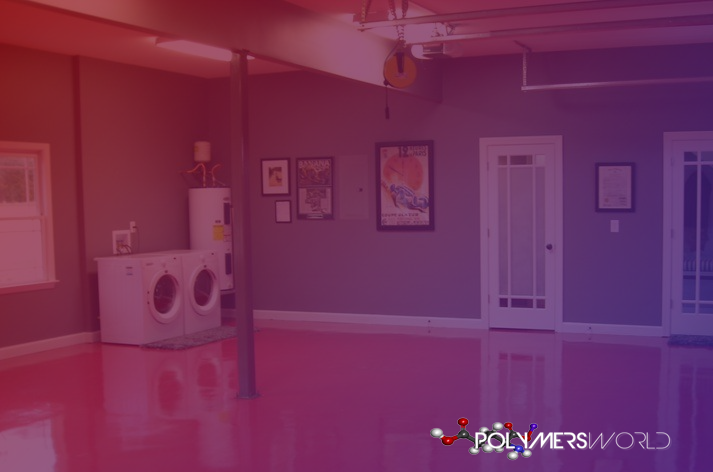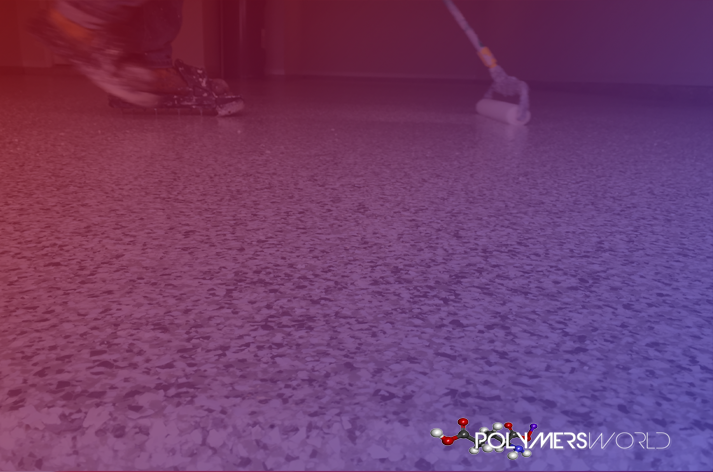Epoxy Coatings vs. Polyaspartic Coatings
Ever since the creation of the first concrete floor, humanity has searched for a way to protect and beautify the surface. Epoxy coatings have been around since the 1930’s and have since taken off to become one of the most popular protectors of concrete floors. Fairly new to the party, polyurea polyaspartic coatings have quickly become the darlings of those who want a fast dry time. Let’s examine each of these contenders and see how they stack up against one another.

Epoxy Coatings
Epoxies are resin polymers made of epoxide units, cyclic three-atom ether rings containing an oxygen atom, and two carbon side-groups. The triangular units are electronically strained and are therefore very reactive. Normally, epoxy resin is produced by reacting bisphenol A and epichlorohydrin, but variants popular for concrete floor applications involve novolac and aliphatic epoxy resins. A typical application consists of an epoxy primer, a color base coat, and two polyurethane layers.
Benefits of Epoxy Coatings:
- Not unreasonable in price
- Creates a hard, decorative finish
- You have many finish options, including color and mix-ins
- Very tough
- Unyielding to chemicals
- Good adhesion — won’t raise
- Long pot life, allowing it to be applied with a manual gun
Drawbacks of Epoxy Coatings:
- Less flexible and less resistant to abrasion
- It can be moderately difficult to apply in hot or cold conditions
- It has a longer drying time
- Has potentially hazardous vapors, although recent formulas have fixed this
- May not be colorfast — subject to fading or yellowing from UV exposure, though many formulations include UV protection
- It cannot be applied when the temperature is below freezing

Polyaspartic Coatings
First introduced in the 1990s, polyaspartic coatings arise from aliphatic polyisocyanate reacting with polyaspartic ester, a diamine. The compound is known as an aliphatic polyurea, which is quite different from conventional polyureas and, in many ways, better. By tailoring the relative amount of the ester, scientists can craft different polyaspartic coatings with various features. For garage floor applications, the ester is the main component, ending in low emissions and quick drying. When applied to grey concrete floors, polyaspartic floor coatings produce a glossy, almost watery tone that customers can color. In some applications, decorative chips are spread on the still-wet topcoat.
Benefits of Polyaspartic Coatings:
- Easier application in a wide variety of cold and hot conditions
- Hard, smooth finish that is stain- and scratch-resistant, great for high-traffic spaces
- Clear and non-sticky when hard
- Fast-drying times cures to full strength in 20-30 min
- Colors and decorative chips possible
- Colorfast, even when utilized to slightly damp concrete
- Low VOCs and odor
- Low viscosity gives it good wetting capacity on concrete but requires a reduced rate of solids
- High, controllable film build-up
- Not likely to bubble from outgassing
Drawbacks of Polyaspartic Coatings:
- The relatively new product, professional application suggested
- Short pot life needs the use of automatic application guns
- Two to three times more costly to purchase and apply
- Must avoid high moisture vapor emission rate conditions when utilizing
- We might have to thin the first coat for better adhesion
- It doesn’t hold up as well to battery acids
- Very slippery when wet, so a top aggregate such as chips suggested

